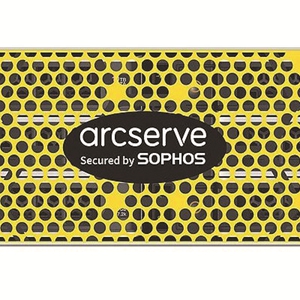Right-minded enterprises take data backup and disaster recovery very seriously as their survival may depend on them, but this task isn't made simple by the overwhelming range of options on the market.
Arcserve aims to make their life a lot easier as its 9000 series Appliances provide a single solution that can manage an entire data protection strategy.
The Arcserve appliances live up to their promise as they provide a central point for managing backup and recovery of all physical and virtual environments. Full disaster recovery is included as they can replicate backup data to remote appliances or an extensive range of cloud storage providers and include smart features such as the ability to spin up instant VMs of protected physical and virtual systems on the appliance or in the cloud.
There's more, as Arcserve partners with Sophos and includes its excellent Intercept X Advanced endpoint protection software. In fact, Arcserve is so confident of its solution that it offers a money-back guarantee if it can't recover your business from a ransomware attack.
The appliances are no lightweights in the hardware department either, as the 9288DR on review is delivered as a classy Dell EMC PowerEdge R740xd 2U rack server. Powered by dual 10-core Intel Xeon Scalable Silver CPUs partnered by 192GB of DDR4 memory, its storage credentials extend to eight 12TB SAS3 HDDs and dual 1.92TB SATA SSDs with room to expand further.

The LFF drives are preconfigured as a dual-drive redundant RAID6 array which provides a main storage area for the local recovery point server (RPS) data stores where data is backed up to and provides all deduplication and replication services. The mirrored SSDs provide a high-performance repository for the deduplication hash tables.
The 9288DR comes preloaded with Windows Server 2019 Standard along with the Unified Data Protection (UDP) software and we found Arcserve's 15 minute deployment claim is quite achievable. After connecting a local monitor, mouse and keyboard, we followed the quick start wizard to name our appliance, set it as a standalone instance, enable encryption, configure email notifications, create our first protection plan and add nodes.
The appliance is easy to manage with the UDP console dashboard showing status views of tasks and backup storage usage. Graphs provide clear assessments of recovery point objectives (RPOs) and recovery time objectives (RTOs) as determined by the SLAs we'd defined for our various plans.
More nodes can be declared manually, discovered from Active Directory or imported from a file and the UDP agent pushed to them directly from the console for backup and bare metal recovery. Declaring virtual machines (VMs) for agentless backup is even easier as we used the import option to browse our Hyper-V and VMware vSphere hosts and add selected VMs.

Along with the protection plan we created using the wizard, we could add more and assign selected nodes to them, choose a destination, set the number of required recovery points and apply a schedule. Instead of an RPS you can use a local disk or shared folder as a destination, but deduplication won't be available.
Microsoft 365 comes under UDP's protection umbrella with options to secure Exchange Online, SharePoint and OneDrive. This did require a fair amount of work at the MS 365 admin portal to authenticate our sources, but Arcserve's helpful support staff guided us through the process where we declared our Exchange Online mailboxes in a separate plan.
UDP's infinite incremental strategy runs a full backup followed by incrementals which only copy changed blocks. You can use the predefined schedules for daily backups or create custom ones that run as often as every 15 minutes.
Plans are highly versatile as you can add extra tasks to them with options including replication to a remote RPS, running an assured recovery test, copy or archiving files and migrating data to a locally attached tape drive using the free Arcserve Backup software. Tasks can also copy recovery points to the cloud with UDP supporting 14 providers including AWS S3, Microsoft Azure, AppScale, Nutanix and Cloudian.
The virtual standby task is a smart feature as it monitors a critical node and if it goes down, it will use the latest recovery point to create a new VM on VMware, Hyper-V, Nutanix AVH, Amazon EC2 or Microsoft Azure. The task updates the standby VM with each backup and if the heartbeat counter running on another system loses contact with the primary node, UDP fires up the standby VM automatically.
To test this, we added a virtual standby task to our SQL Server plan, set the heartbeat counter to 120 seconds and requested the standby VM be provided on our VMware host. When we powered down the primary VM, the task kicked in after the counter time ran out and it had the standby VM up and running in only 95 seconds.
Folder and file recovery is swift as we loaded the agent console for the selected node, chose a recovery point, browsed its contents and restored them back to the node or another location. The agent is SQL Server aware and we had no issues restoring selected databases back to our host.
Instant VM is another handy feature for fast system recovery as we selected a node, picked a recovery point, defined our VMware host and ran the job. UDP had the new VM ready to be used on our VMware host in only 180 seconds.
Create service level agreement (SLAs) profiles for selected nodes with a desired RTO and UDP will tell you if they are achievable. All you do is run a test recovery or a full restore and the UDP dashboard shows if they meet your required RTO objectives.
Product: 9288DR appliance Supplier: Arcserve Web site: www.arcserve.com Contact: info@arcserve.com Price: Appliance with 1 year Gold support and maintenance, £85,602 exc VAT




